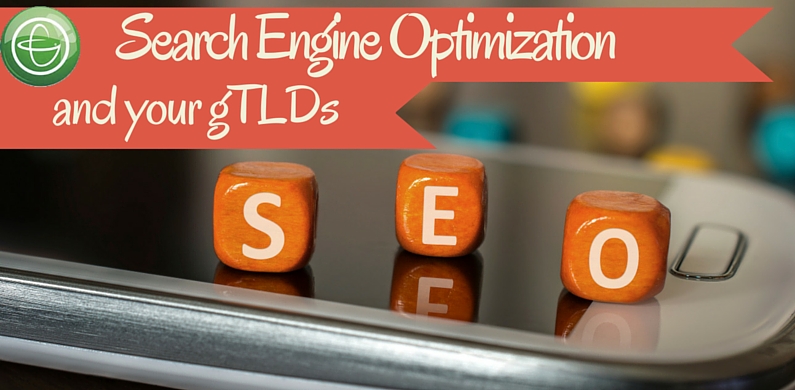Compared to more traditional domains, gTLDs are cost effective, great for branding and in many cases easy to remember. These are just a few of the advantages that gTLDs have over domains. What are the disadvantages? A myth that has persisted for quite a while the gTLDs are not indexed in search engines the same way more traditional domains are, but Google recently came out saying that this just isn’t true. Whether you’ve go a .com or a .lol, Google will treat them the same when it comes to search results. Unfortunately, this means that your keyworded gTLD won’t necessarily bump your site up in search results. So how do you get an advantage in search engine optimization over those .com websites? Apply traditional SEO skills to your website.
Here are a just a few:
Content
Keywords are probably the biggest factor when it comes to search engine optimization. When someone types a search string into Google, you want your website to come as close to possible to matching that string in your content. How do you do this? With the right content and lots of it. Say your website is promoting your domain portfolio of gTLDs. Try to think of the common questions people have about gTLDs (ones you probably had at one point!) and answer them on your website. Have sections on your website like “What do gTLDs cost” or “How do gTLDs differ from ccTLDs?” answer these questions thoroughly and with keywords like domain and TLD repeating in the content wherever possible and logical. No matter your industry, keep your content relevant to your keywords in your business.
Referrals
Referrals means websites linking to your website. Search engines believe when a website is linked to by other sources, this makes that original site more legitimate and worthy of being high in search results. This can be accomplished by offering guest blog posts to other in return for a link from your website to theirs. It can also be helped by posting your content and social media. These social links to your site help to boost your SEO.
Quality
The quality of the content on your website is very important to SEO. Using the right keywords all over your site is great, but is your site delivering when people visit? Keywords will only get you so far if your site is hard to navigate and doesn’t offer the answers it promises. Make sure your content is well written, spell-checked and necessary to your website and your business.
Mobile
One factor that is relatively new to search engine optimization is the ability for a site to be accessed on mobile device. Many website builders offer the option of creating a mobile friendly site and it’s important that you use it. Not only does this increase yoursearch engine optimization, but it insures you don’t lose customers who try to access your site from a mobile device. Unsure if your site is mobile friendly? Grab your phone and visit your site, if you can fully access your site with ease, you’re good to go. If you’re scrolling and struggling to get to the navigation menu, you’ve got work to do.
While .com and gTLDs are treated the same in search, there are many SEO tactics you can use to ensure your gTLD website keeps bumping up to the top of search results. Consider using a few of these tactics or all of them to get your site found quickly.
Become an Affiliate Marketer for GDI and Start Earning Cash NOW!



